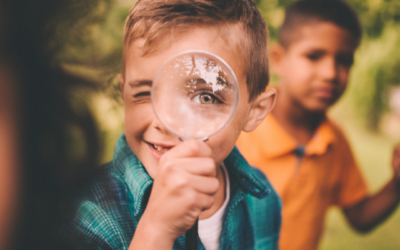🌿 What Is Outdoor Learning INSET? Why Every School Should Consider It If your school is exploring new ways to boost...
What Is Involved in an Outdoor Learning INSET?
Apr 6, 2025
🌿 What Is Involved in an Outdoor Learning INSET? Outdoor learning is more than a walk in the park—it’s a powerful,...
Nature-Based Education in Schools: A Guide to Outdoor Learning
Mar 19, 2025
Why Nature-Based Education is Important Nature-based education is a powerful way to enhance children’s learning by...
Best Outdoor Learning Activities for Kids
Mar 19, 2025
Why Outdoor Learning is Important for Children Outdoor learning provides children with hands-on experiences,...
How to Teach Outdoor Learning: A Guide for Educators
Mar 19, 2025
Why Outdoor Learning is Essential for Education Outdoor learning is an innovative and highly effective teaching...
The Muddy Puddle Approach: Transforming Outdoor Learning
Mar 19, 2025
What is the Muddy Puddle Approach? The Muddy Puddle Approach is a revolutionary outdoor learning method designed to...
Outdoor Learning Maths Lessons: Engaging Ways to Take Learning Outside
Mar 19, 2025
Outdoor Maths Lessons: Engaging Ways to Take Learning Outside Why Outdoor Learning is Essential for Maths Education...
Outdoor Literacy Activities
Mar 19, 2025
Why Outdoor Learning is Essential for Literacy Development Outdoor learning provides a dynamic, engaging, and creative...
Outdoor STEM Activities: Engaging Ideas for Outdoor Learning
Mar 19, 2025
Outdoor STEM Activities: Engaging Ideas for Outdoor Learning Why Outdoor Learning is Perfect for STEM Outdoor learning...
Outdoor Play and Learning: The Key to an Engaging Education
Mar 19, 2025
Why Outdoor Learning Matters Outdoor learning is an essential part of child development, offering hands-on, engaging,...
Primary School Outdoor Learning: Engaging Ways to Take Education Outside
Mar 19, 2025
Why Outdoor Learning is Essential for Primary Schools Outdoor learning is transforming primary education by making...
Outdoor Learning Resources
Mar 18, 2025
Top Places to Visit for Outdoor Learning Resources for Primary Schools Why Outdoor Learning is Essential for Primary...
Early Years Outdoor Learning
Mar 18, 2025
Early Years Outdoor Learning: The Benefits and Best Activities Why Outdoor Learning is Essential in the Early Years...
The Benefits of Outdoor Learning
Mar 12, 2025
The Benefits of Outdoor Learning: Why It’s Essential for Education Why Outdoor Learning Matters Outdoor learning is...
Experiential Learning Outdoors for KS2
Mar 12, 2025
Experiential Learning Outdoors for KS2: Hands-On Outdoor Education Ideas Why Experiential Learning Outdoors is...
Outdoor Learning Curriculum
Mar 12, 2025
The Ultimate Outdoor Curriculum: A Guide to Transforming Outdoor Learning Why an Outdoor Curriculum is Essential for...
Nature Learning Activities
Mar 12, 2025
Nature Learning Activities: Engaging Outdoor Learning Ideas for All Ages Why Nature Learning is Essential for Outdoor...
Outdoor Teaching Ideas for KS2
Mar 12, 2025
Outdoor Teaching Ideas for KS2: Engaging and Effective Outdoor Learning Activities Why Outdoor Learning is Essential...
New In

How Outdoor Learning Supports Mental Health and Wellbeing in Children

10 Easy Outdoor Learning Activities You Can Do Tomorrow

The Ultimate Guide to Outdoor Learning in EYFS & Primary Schools

Rosa Parcs (KS1) Outdoor Lesson Ideas

6 Florence Nightingale (KS1) Outdoor Ideas

50 Forest School Games

Outdoor Volcano Lesson Ideas Pack

Food Chains – Outdoors

Fairness Game















